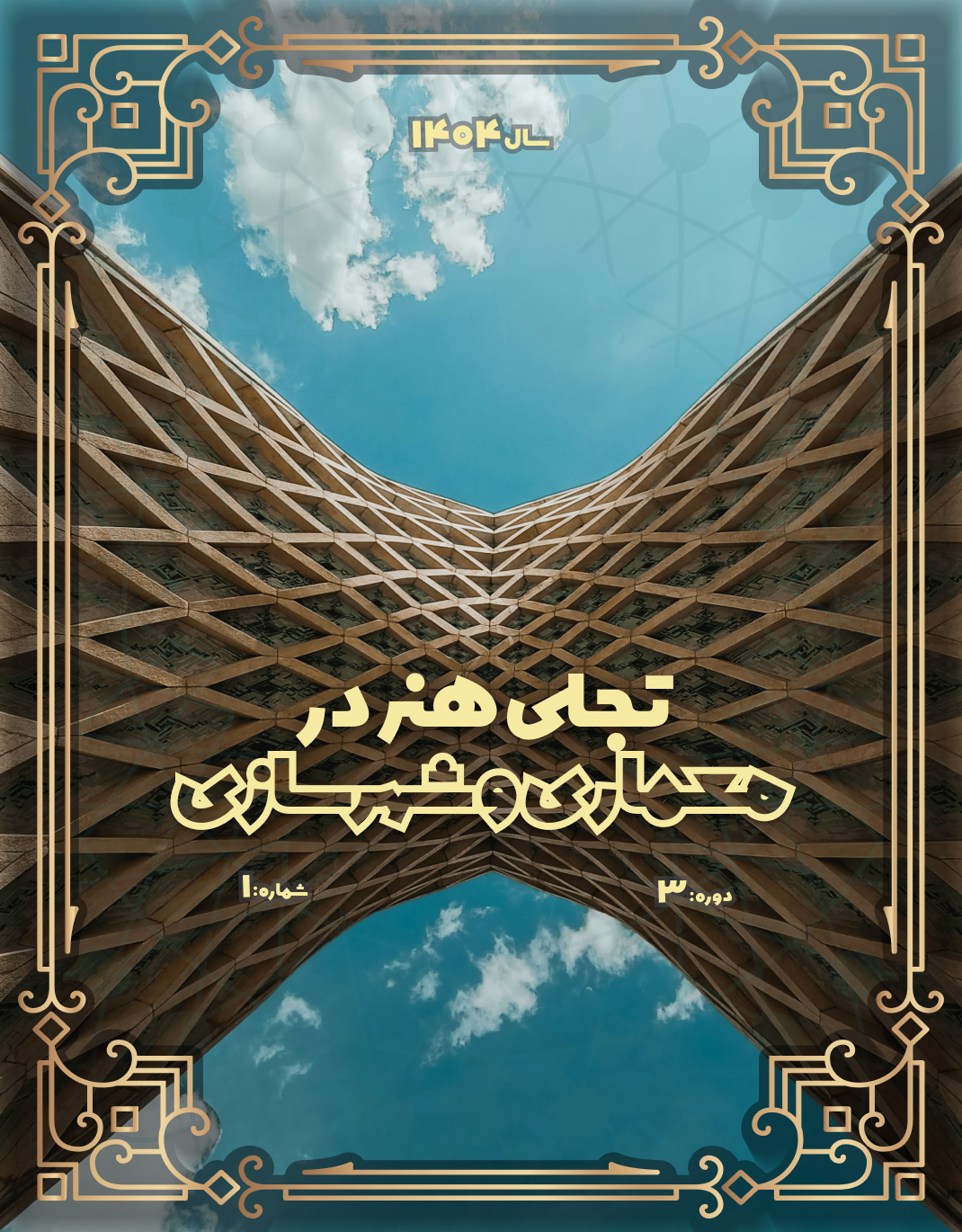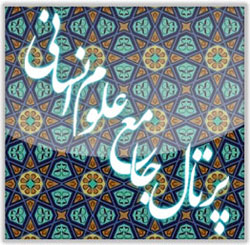Validation of the Questionnaire for Designing Nature-Friendly Residential-Tourism Complexes Based on Organic Architecture (Case Study: Sanandaj City)
Keywords:
Validation, Design, QuestionnaireAbstract
This study aimed to design and validate a comprehensive questionnaire for assessing the key components of nature-friendly residential-tourism complex design based on organic architecture in Sanandaj city. The study employed an applied, quantitative, and correlational design using structural equation modeling (PLS-SEM). The statistical population consisted of architecture and urban planning experts in Sanandaj. Based on Cohen’s table (1992) and partial least squares criteria, 404 valid questionnaires were collected. The researcher-made questionnaire included 20 indicators across four dimensions: meaningful spatial creation, environmental sustainability, economic sustainability, and local cultural sustainability. Data were analyzed using Smart PLS3, and validity and reliability were confirmed through Cronbach’s alpha, composite reliability, convergent validity (AVE), and discriminant validity (Fornell-Larcker). All path coefficients were significant (p<0.001). The most influential dimensions on nature-friendly tourism complex design were meaningful spatial creation (β=0.949, t=209.724), environmental sustainability (β=0.931, t=175.831), economic sustainability (β=0.968, t=391.515), and local cultural sustainability (β=0.929, t=147.201). The model showed high convergent validity (AVE>0.7), reliability (CR and CA>0.7), predictive relevance (Q²>0.35), and strong goodness of fit (GOF=0.670). The validated questionnaire demonstrates strong psychometric properties and can serve as a reliable tool for evaluating the effectiveness of nature-friendly tourism complex designs based on organic architecture. The results highlight the importance of integrating environmental, cultural, and economic sustainability in architectural design to enhance tourism quality and preserve local identity and natural heritage.
Downloads
References
1. Pasiori A. Konsep Arsitektur Organik pada Perancangan Kawasan Wisata Permandian Air Panas Buatan di Tombolo Pao. 2025.
2. Aprilia R. Aplikasi Konsep Arsitektur Organik Menurut David Pearson pada Perancangan Hotel Wisata di Danau Tempe. 2025.
3. Raeisi Nejad AA, Mirhoseini SM, jahanbakhsh H. Study the Relationship between Architecture Structure of Eco_tourist Residence with Tourist Satisfaction (Case Study:Residence of Janat Rudbar Village, Ramsar, Mazandaran Province). Journal of Tourism and Development. 2021;10(1):81-94.
4. Tran D, editor Organicism and an enviro-organic form integrating to the built environment2018.
5. Sha'bani Nia M, Bahadorifard H, Dehghani A. Evaluating Organic Architecture with a Look at the Works of Frank Lloyd Wright and Alvar Aalto. 2023;9(3):143-50.
6. Bystrova E, editor Concept of Organic Architecture in the Second Half of the XXth Century in the Context of Sustainable Development2019.
7. Kim J, Park K. Design Characteristics of Nature-Inspired Architecture. 2018.
8. Ramón CM, Caballero JL, Segarra E, Guapi F, López C, Yaulema Brito LM. The natural landscape as a strategic element in nature tourism management. Revista de Gestão Social e Ambiental. 2024;18(8):1-20.
9. Chan WC, Wan Ibrahim WH, Lo MC, Mohamad AA, Ramayah T, Chin CH. Controllable drivers that influence tourists' satisfaction and revisit intention to SemenggohNature Reserve: The moderating impact of destination image. Journal of Ecotourism. 2022;21(2):147-65.
10. Metwally E. Use Energy Efficiency, Eco-Design, and Eco-Friendly Materials to Support Eco-Tourism. Journal of Power and Energy Engineering. 2019;7(12).
11. Blau ML, Panagopoulos T. Designing healing destinations: A practical guide for eco-conscious tourism development. Land. 2022;11(9):1595.
12. Yuliani S, Setyaningsih W. Green architecture in tourism sustainable development a case study at Laweyan, Indonesia. Journal of Asian Architecture and Building Engineering. 2023;24(1):27-38.
13. Oliynyk O, Amandykova D, Konbr U, Eldardiry D, Galina Zhaina T. Converging Directions of Organic Architecture and City Planning: A Theoretical Exploration. ISVS e-journal. 2023;10(8).
14. Oliynyk O. Converging Directions of Organic Architecture and City Planning: A Theoretical Exploration. 2023.
15. Mortazavi M. Presenting Architectural Strategies and Considerations in Identifying Effective Components for Designing a Tourist Residential Accommodation with an Ecotourism Enhancement Approach. Architecture Studies (Memarishnasi). 2020;3(15):1-8.
16. Alex L, Yong-Jin J, Seongsoo J. Tourism clusters and peer-to-peer accommodation. Annals of Tourism Research. 2020.
17. Emekli G, Baykal F. Opportunities of Utilizing Natural & cultural Resources of Bornova (Izmir) Through Tourism. Procedia-Social & Behavioral Sciences. 2011;19:181-9.
18. Amirgol M, Amirnejad Mozhdehi M, Pourhadi Govabari M, editors. Analyzing the Effective Components in Designing a Recreational Residential Complex with an Eco-Tech Architecture Approach. 8th National Congress on Civil Engineering, Architecture, and Urban Development; 2022; Tehran, Iran.
19. Karimi A, Nouri V, editors. Study and Investigation of Nature-Oriented Architecture in Architectural Design. 5th National Congress on Civil Engineering, Architecture, and Urban Development; 2017: Shahid Beheshti University, Tehran.
20. Kangi Nejad M, Attarian K, editors. Designing a Coastal Recreational Residential Complex with a Nature-Oriented Approach (Case Study: Bandar Lengeh City). 1st International Congress on Purposeful Architecture; 2016.
21. Bamanian MR, Darvishian E, editors. The Role of Organic Architecture in Designing Recreational Residential Environments Coherent with the Tourism Industry. 3rd International Conference on Research in Science and Technology; 2016.
22. Hair JF, Hult GTM, Ringle CM, Sarstedt M. A primer on partial least squares structural equation modeling (PLS-SEM). Thousand Oaks, CA: Sage; 2022.
23. Lee TH, Jan FH, Liu JT. Developing an indicator framework for assessing sustainabletourism: Evidence from a Taiwan ecological resort. Journal of Ecological Indicators. 2021;125(44):2-15.
24. Mahmoudinejad H. Explaining the Educational Foundations of Creativity in Bio-Architecture: Tarbiat Modares University; 2012.
25. Nouri M, Nouri H, Fattahi S, editors. Investigating the Role of Nature-Oriented Architecture in Contemporary Architectural Works. International Conference on Civil Engineering, Architecture, and Urban Development Management in Iran; 2018.
26. Susanto DAN, Diniputi Angelia T, editors. Discovering the Potential of Organic Material in Architecture2018.
27. Ghobadian V. Foundations and Concepts in Contemporary Western Architecture. Tehran: Cultural Research Bureau; 2020.
Downloads
Published
Submitted
Revised
Accepted
Issue
Section
License
Copyright (c) 2025 Hamidreza Erfani (Author); Mahdi Shabanian

This work is licensed under a Creative Commons Attribution-NonCommercial 4.0 International License.










